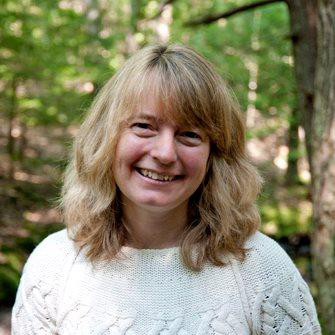Kristen Lindquist: Migrating Flickers and Falcons
 This Northern "Yellow-shafted" Flicker in flight on Beech Hill shows off the origin of his name, as well as the species' diagnostic white rump patch. (Photo couetesy Brian Willson)
This Northern "Yellow-shafted" Flicker in flight on Beech Hill shows off the origin of his name, as well as the species' diagnostic white rump patch. (Photo couetesy Brian Willson)
 Though perched, this bird (a female) is showing off the flicker's diagnostic white rump spot. (Photo courtesy Brian Willson)
Though perched, this bird (a female) is showing off the flicker's diagnostic white rump spot. (Photo courtesy Brian Willson)
 We can tell this beautiful Northern Flicker is a male by the black "whisker" on his face. (Photo courtesy Brian Willson)
We can tell this beautiful Northern Flicker is a male by the black "whisker" on his face. (Photo courtesy Brian Willson)
 A male Northern Flicker displays his many colors and patterns, along with that stiff woodpecker tail that helps him brace against tree trunks. (Photo courtesy Brian Willson)
A male Northern Flicker displays his many colors and patterns, along with that stiff woodpecker tail that helps him brace against tree trunks. (Photo courtesy Brian Willson)
 This flicker feather makes clear why our eastern sub-species is called the "Yellow-shafted Flicker." (Photo courtesy Brian Willson)
This flicker feather makes clear why our eastern sub-species is called the "Yellow-shafted Flicker." (Photo courtesy Brian Willson)
 This Northern "Yellow-shafted" Flicker in flight on Beech Hill shows off the origin of his name, as well as the species' diagnostic white rump patch. (Photo couetesy Brian Willson)
This Northern "Yellow-shafted" Flicker in flight on Beech Hill shows off the origin of his name, as well as the species' diagnostic white rump patch. (Photo couetesy Brian Willson)
 Though perched, this bird (a female) is showing off the flicker's diagnostic white rump spot. (Photo courtesy Brian Willson)
Though perched, this bird (a female) is showing off the flicker's diagnostic white rump spot. (Photo courtesy Brian Willson)
 We can tell this beautiful Northern Flicker is a male by the black "whisker" on his face. (Photo courtesy Brian Willson)
We can tell this beautiful Northern Flicker is a male by the black "whisker" on his face. (Photo courtesy Brian Willson)
 A male Northern Flicker displays his many colors and patterns, along with that stiff woodpecker tail that helps him brace against tree trunks. (Photo courtesy Brian Willson)
A male Northern Flicker displays his many colors and patterns, along with that stiff woodpecker tail that helps him brace against tree trunks. (Photo courtesy Brian Willson)
 This flicker feather makes clear why our eastern sub-species is called the "Yellow-shafted Flicker." (Photo courtesy Brian Willson)
This flicker feather makes clear why our eastern sub-species is called the "Yellow-shafted Flicker." (Photo courtesy Brian Willson)
As a birder, I feel fortunate to live within easy visiting range of one of the East Coast's best birding hotspots, Monhegan Island. During spring and fall migration, this island about 10 miles offshore is a regular migrant trap. When nocturnal migrants following the Atlantic Flyway find themselves out over the open ocean at dawn, this little speck of land is often the closest option for a place to pause and refuel. Lucky birders may then have the opportunity to observe a large number and diversity of birds concentrated in a relatively small space.
The falcon show provides one of the fall migration highlights on the island. During a one-month study of daytime migrant raptors conducted on Monhegan in fall 2010 by the Biodiversity Research Institute, falcons comprised 74 percent of all raptors observed, primarily Merlins (49 percent) and Peregrine Falcons (17 percent).
Depending on the wind and weather, dozens of these strong, fast fliers may be seen zipping overhead during the course of a day.
Devastated by DDT in the 1950s and 60s, the Peregrine Falcon was only recently removed from the federally endangered species list. A sighting of this beautiful bird is not just a thrill but also a heartening reminder of one of avian conservation's success stories. My personal high count of Peregrines seen in the air at one time is eight, observed with little effort while I was enjoying an afternoon cocktail on the inn lawn. Fall birding doesn't get much better than that.
From September onward Northern Flickers also congregate on the island in large numbers on their way south. And by "large numbers," think dozens, even hundreds, although they don't hang out in flocks. The chunky, ungraceful flicker might be deemed less glamorous than the streamlined falcons—I often hear birders refer to them disparagingly as "falcon food"—but their presence is inescapable.
Flickers like to perch out in the open, teed up on a treetop or bare branch. Across an open meadow or marsh, you might spot the distinct silhouette of a flicker in every other tree. Unable to sit still for long, the birds shift position often, jockeying for the best perches, flushing nervously with loud flaps. There's tension in the air, and the interplay between the numerous, fidgety woodpeckers and the aggressive falcons is, for me, the real drama. Each day as Peregrines reach the island and start looking for lunch, the dynamic between predator and prey plays out once more overhead, a varied show complete with aerial displays, exciting chase scenes, sound effects, and surprise endings.
Many of the flicker's historic nicknames reflect the noises it makes: Harrywicket, Wake-up, Wick-up, Clape, Yarrup, and Yellowhammer. (In his Birds Of Massachusetts And Other New England States (1927), Edward Howe Forbush notes that this common and widespread bird has over 125 nicknames!) This chatterbox's vocabulary includes a piercing, two-syllable "He-re!" and a resonating, long, staccato song—"Kekekekekeke"—similar to that of the Pileated Woodpecker. But in the fall you're more likely to hear its squeaky, anxious, "Flicka flicka flicka flicka" as it encounters other flickers. Or, you might catch its evocative, sputtered squeal of sheer panic when it's been dive-bombed by a passing Merlin, or worse, being hungrily pursued by a Peregrine.
The flicker offers up a striking visual in flight, a brown bird sporting a big, obvious white patch on its rump that reminds me of the white flag of a startled deer's tail. You can't miss it. In addition, its underwings flash vivid yellow-gold, the source of its sub-species designation as "Yellow-shafted Flicker." (West of the Rockies one finds the "Red-shafted" sub-species.) If you find a pile of feathers with yellow shafts—perhaps below a Peregrine's feeding perch—they were once attached to a flicker.
You can best appreciate the spangled beauty of a flicker through binoculars, or better yet, at close range as it pokes on a lawn for ants and grubs like an odd, awkward robin. Our poet Edna St. Vincent Millay declared of a pair of flickers, "Powerful was the beauty of these birds," and described them thus: "His head without a crest / Wore the red full moon for crown; / The black new moon was crescent on the breast of each..." (from "Pueblo Pot"). Forbush, who calls the breast band "a black cravat," aptly describes their overall body color as "lilac brown." The male differs from the female by the addition of a black "whisker" near his bill.
Most of Maine's eight woodpecker species are nonmigrants: here year-round. Only the Yellow-bellied Sapsucker and the flicker migrate. The sapsucker, as its name indicates, relies on sap from little wells it drills in trees (see any apple tree for an example) and insects drawn to the sap. So for obvious reasons it needs to head south where sap still flows. The flicker, however, has a more flexible diet and may go or stay. Southern Maine is the northernmost extent of its year-round range, so while most of the state harbors few to none during winter months, some birds may linger along the coast. Beech Hill in Rockport regularly hosts several flickers through the cold months, during which the birds subsist on bayberries and other fruits, seeds, bugs, and grubs they might glean from under bark and dead leaves.
Thousands of flickers clear out from northern Maine and Canada each fall, however. These migrants pile up in coastal areas and on offshore islands as they make their way south, where living is somewhat easier. So while many birders are drawn to Monhegan for its fall falcon show, that show wouldn't be nearly as exciting or complete without the concomitant flicker show. A species' migration routine has evolved, in large part, around its food. This ritual dance between falcon and flicker, hunter and prey, tells an age-old story of survival that we birders follow with such fascination, because, perhaps, we recognize something of our own in their struggle.
 Kristen Lindquist is an amateur naturalist and published poet who lives in her hometown of Camden.
Kristen Lindquist is an amateur naturalist and published poet who lives in her hometown of Camden.
Orchids —They're not just in the tropics
• Meditations on an unlikely harbinger of spring
• Meditations on the Snow Goose
• Sky-watching during the holiday season
• Understanding the Aurora Borealis
• Get to know the constellation Gemini
• Celebrate September’s full moon
• Northern Sky basics with the Big Dipper
• Early Christmas morning: Look up! A full moon, and Orion bright in the sky
Event Date
Address
United States






































